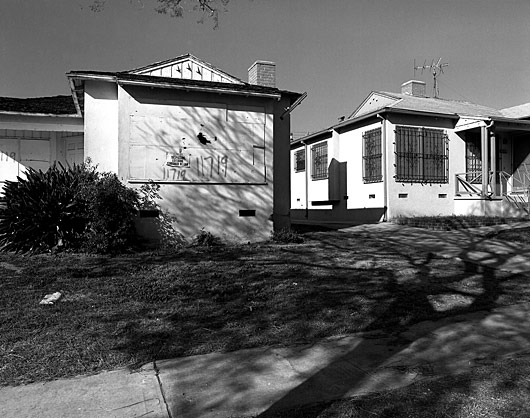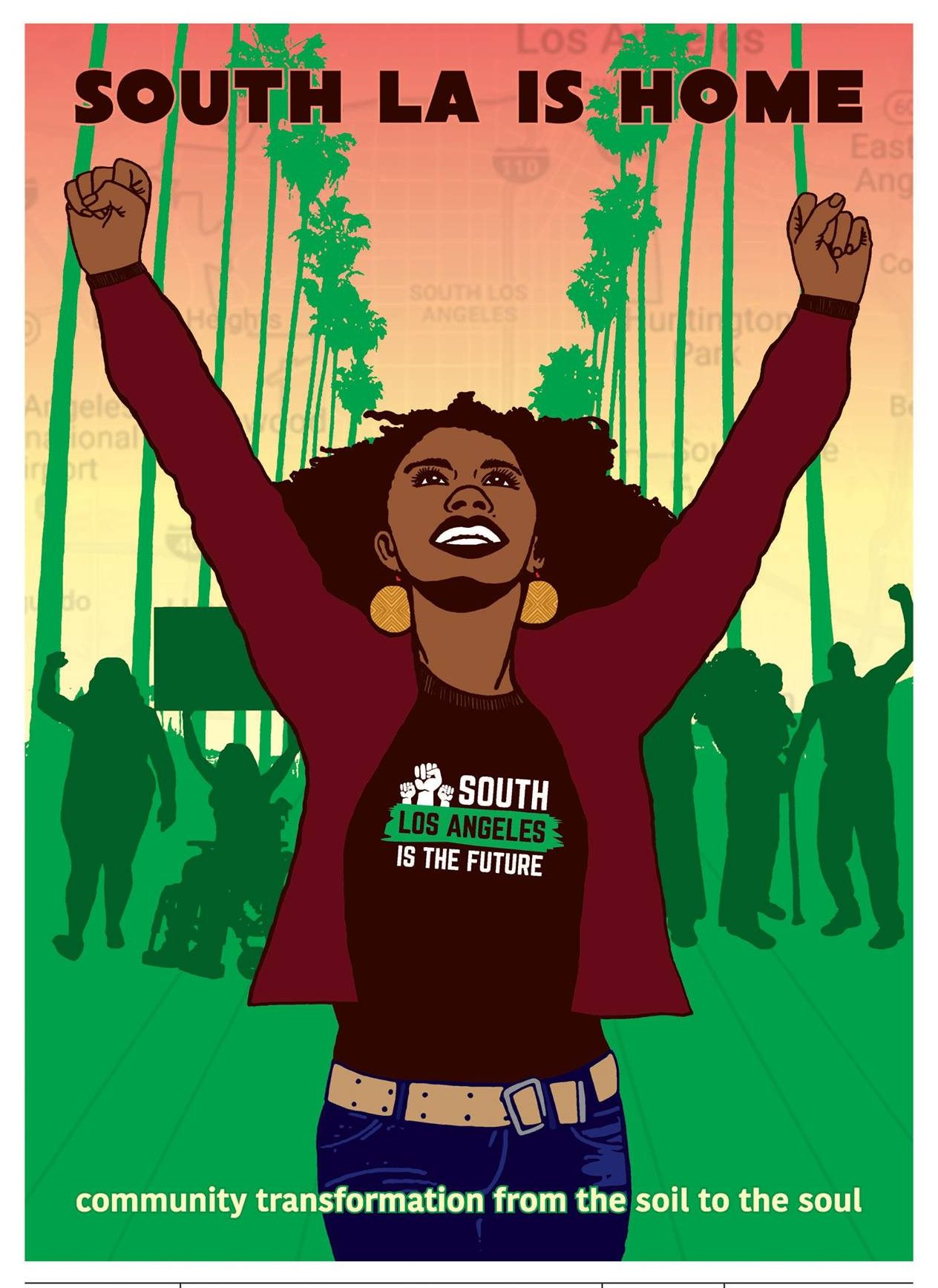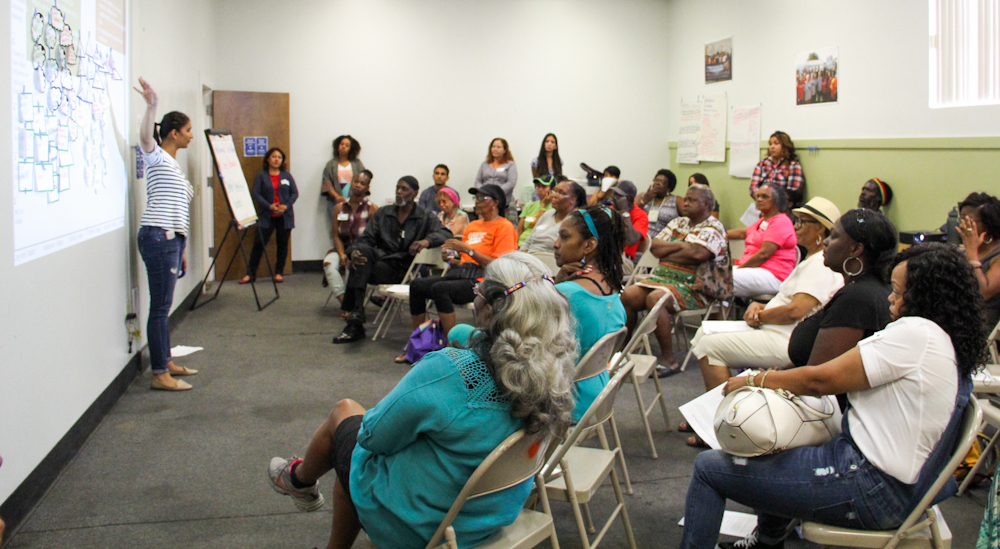
In September 2016, SCOPE celebrated the passage of three key climate policy wins that extended California’s climate change goals, increased transparency at the agency overseeing air quality, and increased targeted climate investments for low-income communities, including the creation of the new Transformative Climate Communities Program (TCC). These wins demonstrate the power of environmental justice communities and were the result of countless hours of organizing, engagement, and advocacy with our elected officials locally and in Sacramento.
Though we celebrated our policy wins, September didn’t mark an end, or even a pause, for our climate justice work at SCOPE. Since then, the SCOPE research team, along with our Los Angeles Equity Alliance (LAEA) partners, has conducted research and community engagement to help inform the implementation of these policy changes in our local community. Our grassroots leaders have attended speaker trainings, met with elected officials, and participated in public forums to advocate for equitable climate investment that builds momentum toward our community-led vision of climate justice for South Los Angeles.
Climate Equity from the Grassroots: Aligning State and Local Priorities with a Community Vision
Our priorities for climate investments are grounded in the belief that the public sector must play a leading role in developing a long-term strategy to secure equitable investment for communities facing the highest pollution and poverty burdens across the state. In our new report, Climate Equity from the Grassroots, we analyzed the scale and distribution of place-based GGRF investments in the City of Los Angeles and found that investments are not adequately reaching communities in South L.A.
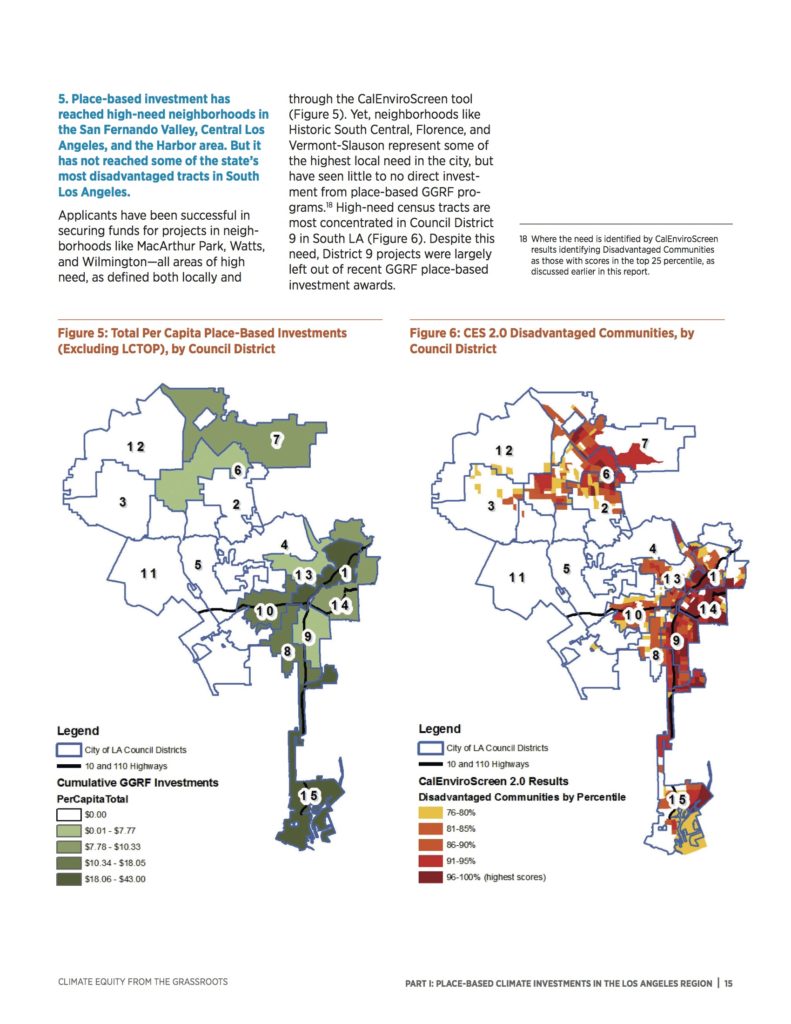
Where the need is identified by CalEnviroScreen results identifying Disadvantaged Communities as those with scores in the top 25 percentile.
Without large-scale place-based climate investments reaching the most vulnerable communities in Los Angeles, the City cannot reach full implementation of equity-driven plans and policies, like the Sustainable City Plan or the Plan for a Healthy Los Angeles, that have recently been adopted. Nevertheless, the Transformative Climate Communities (TCC) Program presents an exciting and unprecedented opportunity to develop a new climate investment model that focuses on achieving state goals of reducing greenhouse gases while ensuring local economic opportunity, community health and anti-displacement measures, like those prioritized by the City of Los Angeles, are realized.
The TCC Program is designed to fund planning and implementation of plans in the state’s most disadvantaged communities—those scoring in the top five percent of the most environmentally and economically burdened census tracts on the CalEnviroScreen tool. Successful projects will combine various strategies to reduce greenhouse gases, improve health outcomes, and increase the economic benefits to residents in a comprehensive community-driven approach—a new standard for GGRF programs that have tended to fund single-strategy projects like affordable housing, transportation, or urban forestry. This new model that stresses multisector collaboration and community-driven priorities has the potential to transform how and where the money from Cap and Trade revenues is distributed in the state. It also has the potential to provide funding for the City of Los Angeles to align state-mandated goals of greenhouse gas reduction with local climate justice priorities determined by residents in the most environmentally burdened communities.
A South Los Angeles Vision for Climate Justice
Our South L.A. vision for climate justice has been developed collectively with the Los Angeles Equity Alliance—an alliance of community organizations working on equity in affordable housing, workforce development, health, land use, and environmental justice for South L.A.—which came together in 2014 in response to the slow recovery from the Great Recession to advocate for our families, neighbors, and local businesses.
We envision a South L.A. that is a healthy and economically stable region with opportunities and resources for residents to thrive and sustain themselves, their families, and their communities. This vision is guided by residents with support from a robust public sector that provides equitable investment and full integration of low-income communities of color in the decision-making processes about where and how to invest public funds, especially those coming from the GGRF.
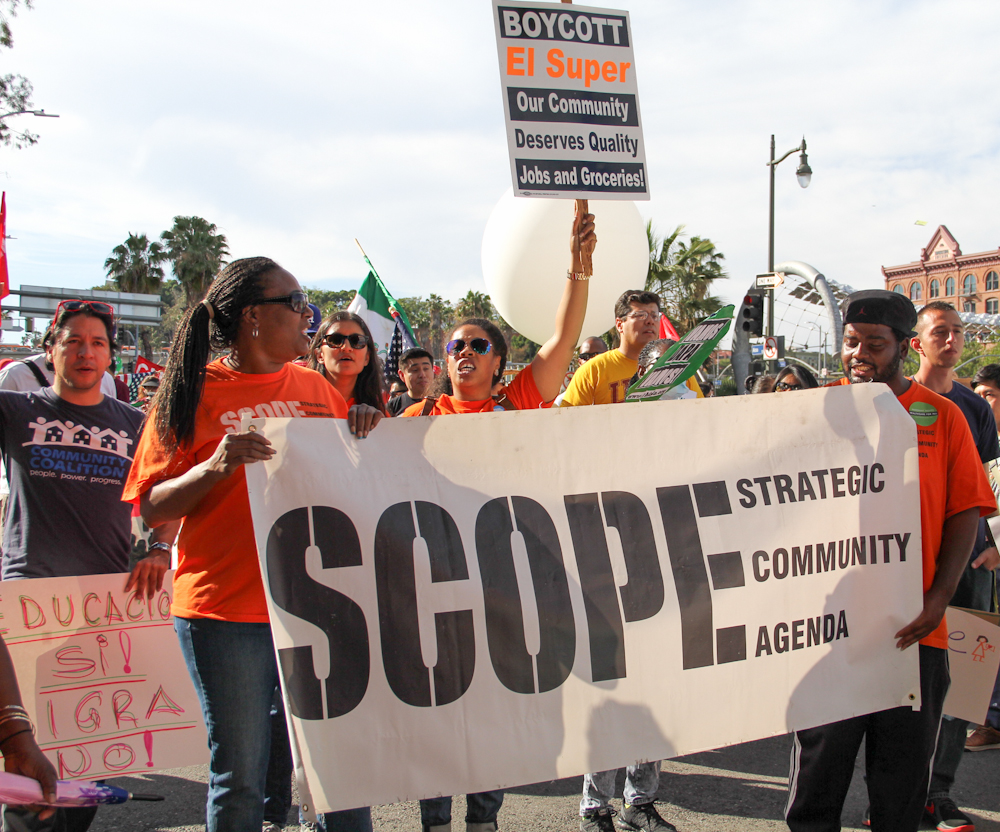
We want investments from the Greenhouse Gas Reduction Fund (GGRF) to support South L.A. across five broad areas:
- Jobs and workforce development opportunities for local residents in emerging climate and clean energy sectors;
- Access to health care resources, cleaner air, and reduced toxins to ensure health equity for our communities;
- Housing that is affordable and energy efficient so that residents can afford to remain living in South L.A. neighborhoods and are not displaced by investments in infrastructure, urban greening, and real estate development;
- Land use changes that result in more parks and less polluting industries, and sustainable development that is community-serving; and
- Access to safe, reliable, and affordable transportation close to where our residents live and work.
We know that communities in South L.A. are disproportionately burdened by environmental hazards, pollution, and related negative health and social outcomes like asthma, lack of access to healthy foods, and decreased life expectancy. This is why our vision for shared prosperity that benefits all Angelenos, regardless of race or socioeconomic background, prioritizes the highest-need neighborhoods that have historically had the least access to the benefits created by public investment.
To realize our vision of climate justice for South L.A. we need a collaborative, multi-stakeholder effort. We need our public sector leaders to support the development of a strategic investment plan that guides climate investments into the communities that need them most and is driven by the principles of climate equity and community self-determination. It is critical that public investments are used strategically to implement a vision that is planned for and by the community. Most investments or plans are made with minimal input put from the individuals most affected in the community. In our long experience working within South L.A., we know that local residents have valuable insights into the problems and conditions they face and wise ideas about which solutions will provide the most effective remedies.
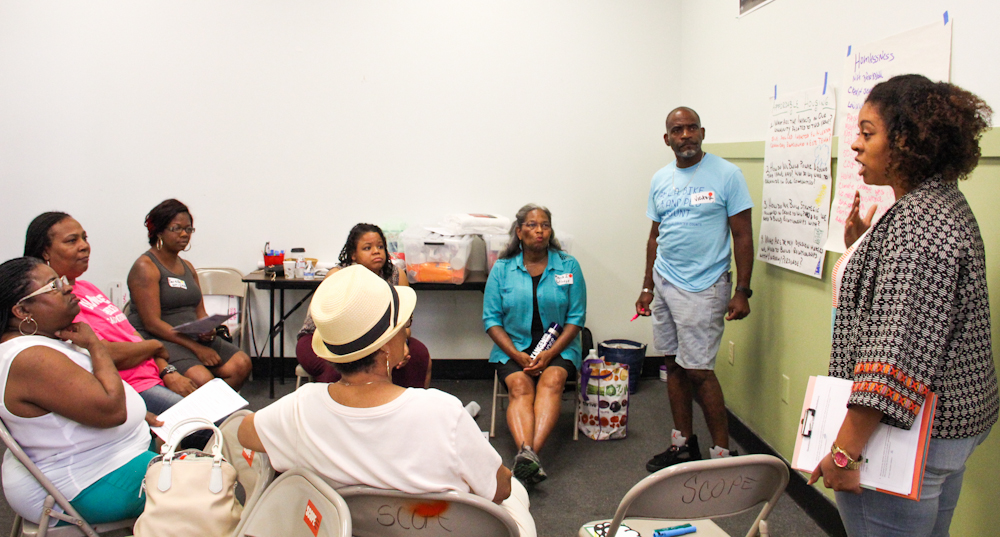
Making Community-Driven Climate Investments Successful
In October 2016, it was announced that $35 million of the total $140 million of the program funding available for the first year of TCC program would be directly awarded for a project in the City of Los Angeles. SCOPE members, through their work with the LAEA, have identified this as an opportunity to transform South L.A. in a way that builds community power for residents—by bringing our voices to the decision-making table both in the development of program guidelines and in the implementation of projects—while upholding local values of equitable development.
SCOPE, through the LAEA and other partnerships, has submitted several recommendation letters to the Strategic Growth Council (SGC), the agency that is developing guidelines and scoring criteria for the TCC Program. To ensure successful implementation of TCC, the SGC should:
1. Ensure the TCC Program Guidelines are designed to reach the most disadvantaged communities, while creating an inclusionary framework that prioritizes the voice of community in the vision and plan for transformation.
We believe that the TCC Program can be designed to reach communities that have historically been neglected by public policies on investment and land use, while creating new opportunities for community voices to be heard and visions to be implemented. Programs from the GGRF tend to use priority criteria or definitions of need that exclude communities like ours from investment. First, the focus on projects that meet criteria of (1) shovel-readiness and (2) alignment with existing plans put communities in South L.A. at a disadvantage directly resulting and compounding on the lack of existing investments in our communities.
Second, investments are guided into “disadvantaged communities” that are defined by scores in the CalEnviroScreen—a useful tool that captures environmental burden, but disregards race, which is highly correlated with exposure to environmental injustice. CalEnviroScreen 3.0, the latest update to the tool, captures additional data that ensures more of our largely Black and Latino neighborhoods in South L.A. are accurately targeted for investment, thus it should be prioritized over use of CalEnviroScreen 2.0, the tool available when the TCC Program was first created.
2. Require or incentivize integrated participatory planning practices and processes that build power for residents in decision-making processes.
The Strategic Growth Council has recognized that traditional planning models have, at best, not been inclusive of community-driven priorities and, at worst, been detrimental to the health and socioeconomic outcomes of residents. Thus, the LAEA believes that if a project proposal aligns with an existing plan there should be an additional metric or scoring mechanism that evaluates the degree to which the existing plan truly captures community-driven priorities and addresses issues of equitable land development. In Los Angeles, participatory strategies and democratic decision-making processes are particularly important because of the history of development leading directly to the displacement of low income communities of color.
3. Provide Technical Assistance through the TCC Program that builds the organizational and technical capacity of community-based grassroots organizations that have a history of working with low income and communities of color.
Technical assistance for the various phases of the grant application processes of TCC Implementation Grants and TCC Planning Grants should be qualified and robust enough that it directly increases the capacity of community-based organizations to successfully apply for and receive TCC Program funds. Technical assistance should provide support to develop: (a) Innovative GHG-Reduction Quantification Methodologies; (b) Participatory Planning and Equitable Development Expertise; and (c) Understanding of all GGRF Programs.
4. Ensure the TCC Program leads to increased economic stabilization policies and programs that build the local economies of low income communities and communities of color across the state.
The February draft of the Scoping Guidelines for TCC includes suggested strategies and indicators that fall under: Equitable Land Development, Workforce Development and Education, and High Quality Job Creation and Local Economic Development. While many of the strategies in those categories align with our vision for climate justice, we believe the SGC can go further in ensuring that projects funded through TCC increase economic stabilization and build the local economy. This begins by ensuring that workforce development programs are connected to pipelines into jobs with family-sustaining wages.
Further, economic stabilization can include strategies that focus on providing services to longstanding residents of target communities: Rental assistance and tenant legal services; Financing program and/or tenant right of first refusal policy to help residential or commercial tenants or community organizations purchase properties when landlords sell; Home ownership stabilization and foreclosure prevention programs; Public service and capital investment criteria that weights the needs of populations with the greatest racial disparities in outcomes. Finally, building the local economy can include strategies that focus on the needs of long-standing local businesses: Access to low-cost capital and financial services for residents, small businesses, and community organizations; and, Mitigation and technical assistance programs for small local businesses and community organizations.
This post was written by Research & Communications Associate Jessica Medina

